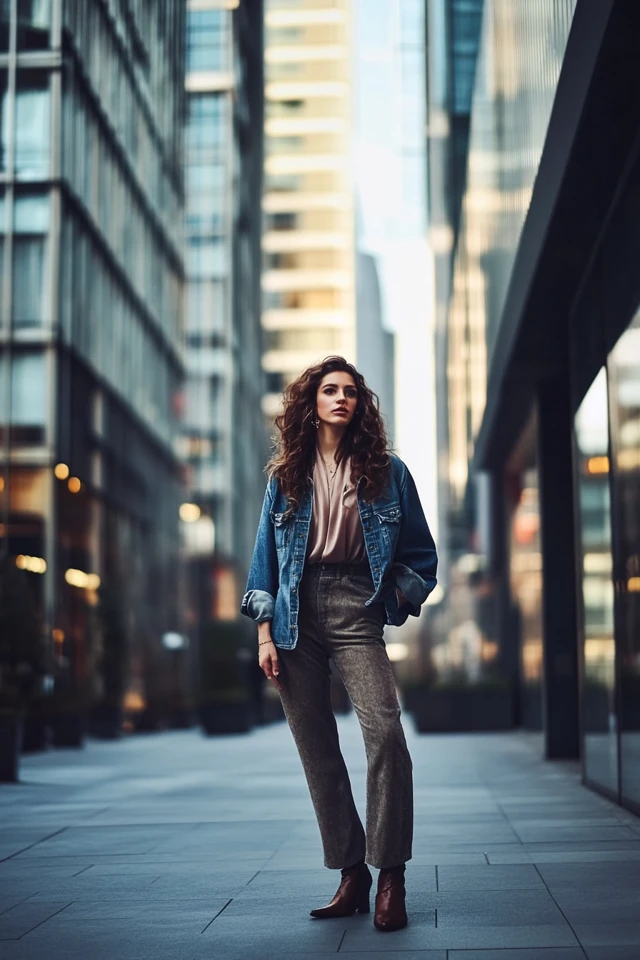Fashion is a tactile experience that goes beyond colors and silhouettes. The interplay of different textures can transform an outfit, adding depth, dimension, and intrigue. Mixing textures is an art form that allows you to express creativity, highlight personal style, and elevate your overall look. This comprehensive guide explores the principles of texture mixing, highlights essential textured pieces, provides practical styling tips, and offers inspirational ideas to help you master the art of combining varied materials in your wardrobe.
Introduction
In the realm of fashion, texture plays a crucial role in defining the aesthetic and feel of an outfit. While color can set the mood, textures bring it to life, creating a sensory experience that engages both sight and touch. Mixing textures involves combining different materials such as silk, leather, denim, wool, lace, and more within a single outfit to create visual interest and a dynamic appearance.
About the Author and My Trend Boutique
Whether you’re aiming for a casual, eclectic look or a sophisticated, polished ensemble, understanding how to mix textures effectively can enhance your style and make your outfits stand out. This guide will provide you with the knowledge and inspiration needed to experiment with various textures, ensuring that your wardrobe remains versatile, stylish, and uniquely yours.
Understanding Mixing Textures
What Is Texture Mixing?
Texture mixing is the practice of combining different fabric types and finishes within a single outfit. This technique adds layers of visual interest and complexity, preventing looks from appearing flat or monotonous. Common textures used in mixing include:
- Smooth Textures: Silk, satin, leather
- Rough Textures: Denim, tweed, suede
- Sheer Textures: Chiffon, lace, organza
- Cozy Textures: Knitwear, fleece, cashmere
Why Texture Mixing Matters
Mixing textures can:
- Enhance Visual Appeal: Creates a multi-dimensional look that captures attention.
- Add Depth: Introduces varying levels of shine, matte finishes, and patterns.
- Express Personal Style: Reflects creativity and a keen eye for detail.
- Adapt to Occasions: Versatile for both casual and formal settings.
Essential Textured Pieces
1. Leather Jackets
Description: Leather jackets are timeless staples that add edge and sophistication to any outfit. Available in various styles such as biker, bomber, and tailored, they can be paired with multiple textures for a versatile look.
Why They’re Essential:
- Durability: Long-lasting and resistant to wear.
- Versatility: Complements both casual and dressed-up ensembles.
- Statement Piece: Acts as a focal point in any outfit.
Styling Tips:
- Pair a leather jacket with a chunky knit sweater and denim jeans for a balanced casual look.
- Combine with a silk blouse and tailored trousers for a chic, office-appropriate ensemble.
- Layer over a lace dress to add an unexpected edge to feminine styles.
2. Denim Jeans
Description: Denim jeans are a wardrobe essential known for their durability and versatility. They come in various cuts, including skinny, straight-leg, boyfriend, and flared, allowing for diverse styling options.
Why They’re Essential:
- Timeless Appeal: Never goes out of style and adapts to trends.
- Comfort: Suitable for everyday wear.
- Foundation Piece: Acts as a base for experimenting with different textures.
Styling Tips:
- Wear with a suede blazer and a cashmere sweater for a rich, textured look.
- Combine with a leather jacket and a graphic tee for a rugged, casual vibe.
- Pair with a silk blouse and statement accessories for an elevated outfit.
3. Silk Blouses
Description: Silk blouses offer a smooth, luxurious texture that adds elegance and sophistication to any outfit. Available in various styles, including button-downs, wrap tops, and off-the-shoulder designs.
Why They’re Essential:
- Elegance: Instantly elevates any look with its sheen and drape.
- Versatility: Can be dressed up or down for different occasions.
- Comfort: Lightweight and breathable, perfect for layering.
Styling Tips:
- Pair with a tweed skirt and ankle boots for a classic, textured ensemble.
- Combine with distressed denim and a leather jacket for a modern, chic look.
- Layer under a chunky knit cardigan and high-waisted trousers for a cozy yet stylish outfit.
4. Knitwear
Description: Knitwear encompasses a wide range of garments made from knitted fabrics, including sweaters, cardigans, and turtlenecks. They provide warmth and texture, making them perfect for layering.
Why They’re Essential:
- Cozy Appeal: Adds warmth and comfort to outfits.
- Textural Contrast: Pairs well with smooth and rough fabrics alike.
- Versatility: Suitable for both casual and formal settings.
Styling Tips:
- Wear a chunky knit sweater with a leather skirt and combat boots for a balanced look.
- Combine a fine-knit cardigan with a silk blouse and tailored pants for a polished appearance.
- Layer a turtleneck under a sheer top to add dimension and warmth.
5. Suede Accessories
Description: Suede accessories, such as bags, belts, and shoes, offer a soft, textured finish that adds depth and richness to your outfits.
Why They’re Essential:
- Texture Contrast: Provides a subtle contrast to smooth fabrics like silk and satin.
- Sophistication: Adds a touch of luxury and elegance.
- Versatility: Complements a wide range of colors and styles.
Styling Tips:
- Add a suede belt to a denim jacket and trousers for a cohesive textured look.
- Carry a suede handbag with a silk dress to introduce warmth and texture.
- Wear suede ankle boots with a leather skirt and knit sweater for a balanced ensemble.
Styling Tips for Mixing Textures
1. Balance Light and Heavy Textures
Mixing lightweight fabrics like silk and chiffon with heavier materials like denim and leather creates a balanced and harmonious look.
- Example: Pair a silk blouse with a chunky knit cardigan and distressed denim jeans.
- Example: Combine a lightweight chiffon skirt with a structured leather jacket.
2. Combine Different Fabric Types
Incorporate a variety of fabric types to add depth and interest to your outfits.
- Example: Wear a suede skirt with a lace top and a denim jacket.
- Example: Pair a wool coat with a silk scarf and leather boots.
3. Play with Color and Texture
Use color to enhance the interplay of textures. Neutral tones work well to highlight different materials, while bold colors can make texture mixing more dynamic.
- Example: Combine a beige tweed blazer with a white silk blouse and black leather pants.
- Example: Pair a burgundy velvet dress with a denim jacket and suede boots.
4. Layer Strategically
Layering allows you to showcase multiple textures without overwhelming the outfit. Use layers to add dimension and keep the look cohesive.
- Example: Layer a knit sweater over a lace camisole and pair with a leather skirt.
- Example: Wear a sheer blouse under a chunky knit cardigan with tailored trousers.
5. Maintain Proportions
Ensure that your outfit remains balanced by considering the proportions of each textured piece. For instance, balance a voluminous knit sweater with slim-fit pants.
- Example: Pair an oversized knit cardigan with skinny jeans and ankle boots.
- Example: Combine a fitted silk blouse with a wide-leg suede skirt.
6. Use Accessories to Enhance Textures
Accessories can highlight and complement the textures in your outfit. Choose pieces that either match or contrast with the main textures to add interest.
- Example: Add a suede belt to a velvet dress for a cohesive look.
- Example: Wear a chunky knit scarf with a silk dress and leather boots.
7. Embrace Minimalism When Needed
Sometimes, less is more. Allow one or two textured pieces to stand out while keeping the rest of the outfit simple and streamlined.
- Example: Wear a textured suede jacket with a plain silk t-shirt and black trousers.
- Example: Pair a velvet skirt with a minimalistic knit top and simple accessories.
8. Experiment with Patterns and Textures
Incorporate patterned textiles to add another layer of texture and visual interest to your outfits.
- Example: Combine a plaid tweed blazer with a floral silk blouse and distressed jeans.
- Example: Pair a striped knit sweater with a geometric patterned skirt and leather boots.
9. Consider the Occasion
Tailor your texture mixing to suit the occasion. More formal events may require a refined combination of textures, while casual settings allow for a relaxed and eclectic mix.
- Example: For a business meeting, pair a wool blazer with a silk blouse and tailored trousers.
- Example: For a weekend outing, mix a denim jacket with a chunky knit sweater and suede boots.
10. Confidence is Key
Mixing textures requires confidence. Embrace your unique style choices and wear your outfits with assurance to enhance your overall appearance.
Practical Advice for Mixing Textures
1. Start Small
If you’re new to texture mixing, begin by incorporating one textured piece into a mostly solid outfit. This allows you to experiment without feeling overwhelmed.
- Example: Add a suede belt to a plain knit sweater and jeans.
- Example: Wear a chunky knit scarf with a silk blouse and tailored pants.
2. Invest in Quality Pieces
High-quality fabrics not only look better but also feel more comfortable. Invest in well-made textured garments that will last and maintain their appearance over time.
- Example: Choose a durable leather jacket and pair it with a soft cashmere sweater.
- Example: Opt for a high-quality denim pair that complements your favorite silk tops.
3. Understand Fabric Care
Different fabrics require specific care to maintain their texture and appearance. Follow care instructions diligently to preserve the integrity of your textured pieces.
- Tips:
- Leather: Use appropriate cleaners and conditioners to prevent drying and cracking.
- Wool: Hand wash or use a gentle cycle to avoid shrinking and felting.
- Silk: Dry clean or hand wash with mild detergent to maintain smoothness.
4. Experiment with Seasonal Textures
Adapt your texture mixing to the seasons by choosing fabrics that are appropriate for the weather while still allowing for creative combinations.
- Example: In winter, mix wool, leather, and knitwear for warmth and style.
- Example: In summer, combine lightweight fabrics like linen and silk with denim for a breezy yet textured look.
5. Balance Bold and Subtle Textures
Combine bold, statement textures with more subtle ones to create a balanced and cohesive outfit.
- Example: Pair a structured leather jacket with a soft knit sweater and simple jeans.
- Example: Wear a velvet dress with a delicate lace shawl and minimalistic accessories.
6. Use Texture as a Focal Point
Allow a textured piece to act as the focal point of your outfit by keeping other elements simple and complementary.
- Example: Let a chunky knit sweater stand out by pairing it with straight-leg jeans and simple boots.
- Example: Highlight a suede skirt by wearing it with a plain blouse and minimal accessories.
7. Layer Thoughtfully
When layering textured pieces, ensure that each layer complements the others in terms of color, pattern, and material to create a harmonious look.
- Example: Layer a lace top under a chunky knit cardigan and pair with denim jeans.
- Example: Wear a silk camisole under a tweed blazer and add leather boots for a balanced ensemble.
8. Play with Color and Texture Combinations
Explore how different colors interact with various textures to enhance the overall aesthetic of your outfits.
- Example: Combine a rich burgundy velvet blazer with a soft beige cashmere sweater and black leather pants.
- Example: Pair a pastel-colored silk blouse with a textured denim jacket and white jeans for a fresh, vibrant look.
9. Accessorize to Enhance Textures
Choose accessories that either match or contrast with the textures in your outfit to add depth and interest.
- Example: Add a leather handbag to a wool coat and silk scarf combination.
- Example: Wear metallic jewelry with a velvet dress to introduce a contrasting texture.
10. Stay True to Your Style
While experimenting with textures, ensure that the combinations align with your personal style and comfort. Authenticity enhances confidence, making your outfits appear more cohesive and intentional.
- Example: If you prefer minimalist styles, opt for subtle texture mixing with neutral tones.
- Example: For a bold aesthetic, combine vibrant colors and varied textures to make a statement.
Example Outfit Ideas
1. Chic Office Ensemble
Outfit Components:
- Wool tailored blazer
- Silk blouse in a soft pastel color
- High-waisted black trousers
- Leather loafers
- Structured leather handbag
Styling Tips:
- Layer the wool blazer over the silk blouse for a polished and professional look.
- Pair with high-waisted black trousers to create a sleek silhouette.
- Add leather loafers and a structured handbag to enhance sophistication.
- Keep accessories minimal with a delicate necklace or stud earrings.
2. Casual Day Out
Outfit Components:
- Denim jacket
- Chunky knit sweater
- Distressed skinny jeans
- Suede ankle boots
- Knit beanie
Styling Tips:
- Layer the denim jacket over the chunky knit sweater for a cozy and stylish appearance.
- Combine with distressed skinny jeans for a relaxed, everyday vibe.
- Add suede ankle boots and a knit beanie to complete the casual ensemble.
- Accessorize with a crossbody bag or tote in a complementary texture.
3. Evening Glam
Outfit Components:
- Velvet midi dress
- Lace overlay shawl
- Leather ankle boots
- Statement chandelier earrings
- Metallic clutch
Styling Tips:
- Let the velvet midi dress take center stage by keeping other elements elegant and understated.
- Layer with a lace overlay shawl to add a delicate texture and warmth.
- Pair with leather ankle boots for an edgy yet sophisticated touch.
- Accessorize with statement chandelier earrings and a metallic clutch to enhance the glamorous vibe.
4. Weekend Brunch
Outfit Components:
- Linen button-down shirt
- Suede midi skirt
- Knit cardigan
- White sneakers
- Leather crossbody bag
Styling Tips:
- Tuck the linen button-down shirt into the suede midi skirt for a polished casual look.
- Layer with a knit cardigan for added warmth and texture.
- Add white sneakers for comfort and a modern touch.
- Carry a leather crossbody bag to complete the chic and functional outfit.
5. Boho Vibes
Outfit Components:
- Embroidered crochet top
- Flared denim jeans
- Suede fringe jacket
- Brown leather boots
- Layered beaded necklaces
Styling Tips:
- Combine the embroidered crochet top with flared denim jeans for a bohemian-inspired base.
- Layer with a suede fringe jacket to add movement and texture.
- Pair with brown leather boots for a grounded and earthy feel.
- Accessorize with layered beaded necklaces to enhance the boho aesthetic.
6. Smart Casual Look
Outfit Components:
- Leather bomber jacket
- Cashmere turtleneck
- Tailored chinos
- Suede loafers
- Minimalist watch
Styling Tips:
- Layer the leather bomber jacket over a cashmere turtleneck for a sophisticated yet relaxed look.
- Pair with tailored chinos to maintain a polished silhouette.
- Add suede loafers for comfort and style.
- Accessorize with a minimalist watch to keep the ensemble sleek and modern.
Picture Gallery
FAQs
1. How can I mix textures without overwhelming my outfit?
- Answer: Start by combining one bold texture with one or two subtle ones. Balance heavy textures like leather or wool with lighter fabrics like silk or chiffon. Keeping the color palette cohesive also helps maintain harmony in your look.
2. What are some common texture combinations to try?
- Answer: Popular texture combinations include:
- Leather and silk
- Denim and knitwear
- Suede and lace
- Velvet and denim
- Tweed and cashmere
3. Can I mix multiple textures in a single outfit?
- Answer: Yes, mixing multiple textures can create a rich and layered look. Ensure that each texture complements the others and that the overall outfit remains balanced. Limiting the number of textures to three or fewer can help maintain cohesion.
4. How do I choose textures that flatter my body type?
- Answer: Choose textures that highlight your best features. For example, structured fabrics like tweed and leather can add definition to your silhouette, while flowy materials like chiffon and silk can create a graceful appearance. Consider how each texture interacts with your body shape to enhance your natural lines.
5. Are there seasonal considerations when mixing textures?
- Answer: Yes, certain textures are more suitable for specific seasons. In colder months, mix warm textures like wool, cashmere, and suede. During warmer seasons, incorporate lightweight fabrics like linen, cotton, and silk to keep your outfits breathable and comfortable.
Picture Gallery
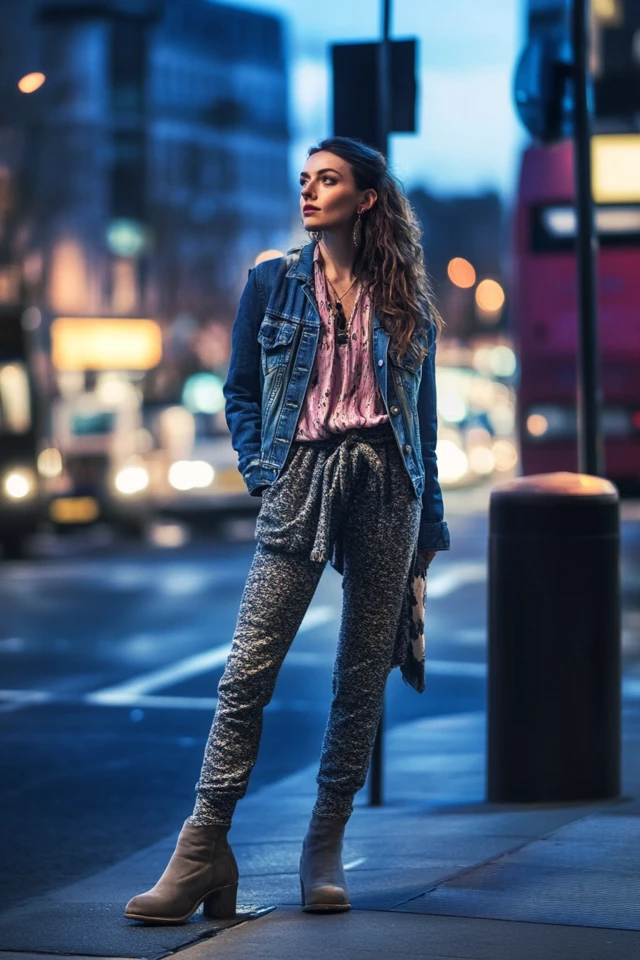

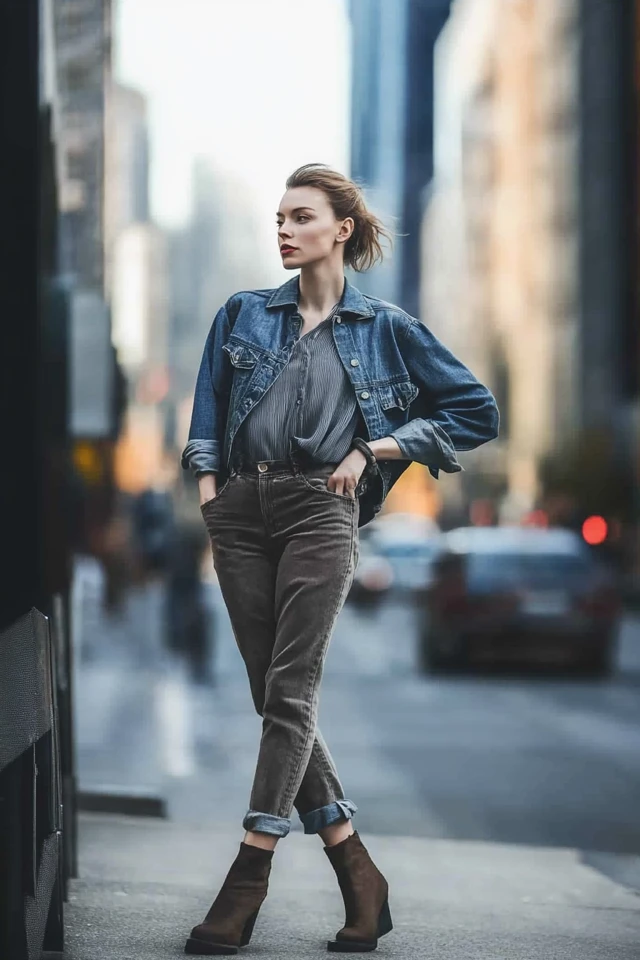
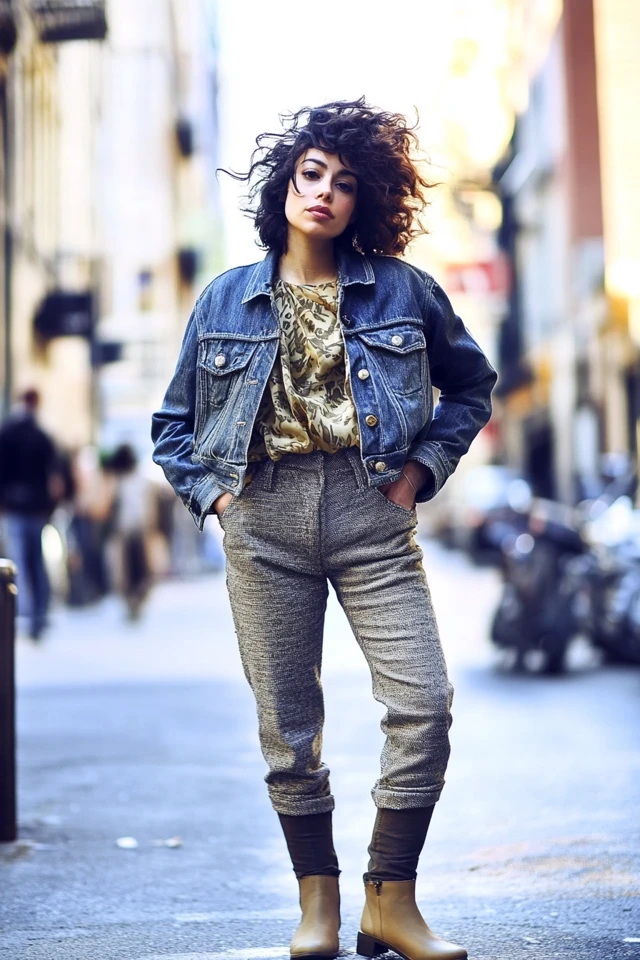

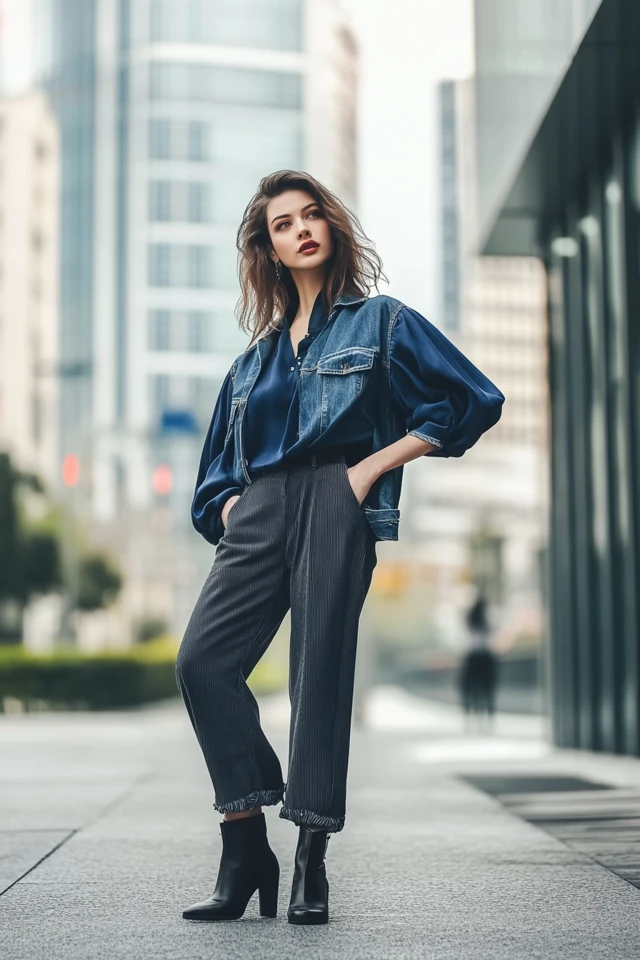
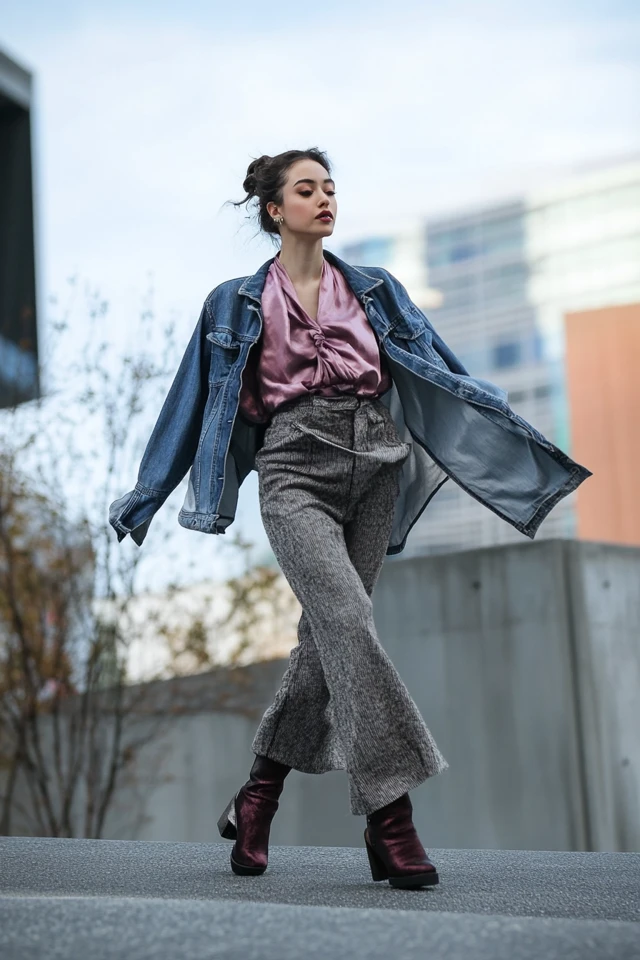
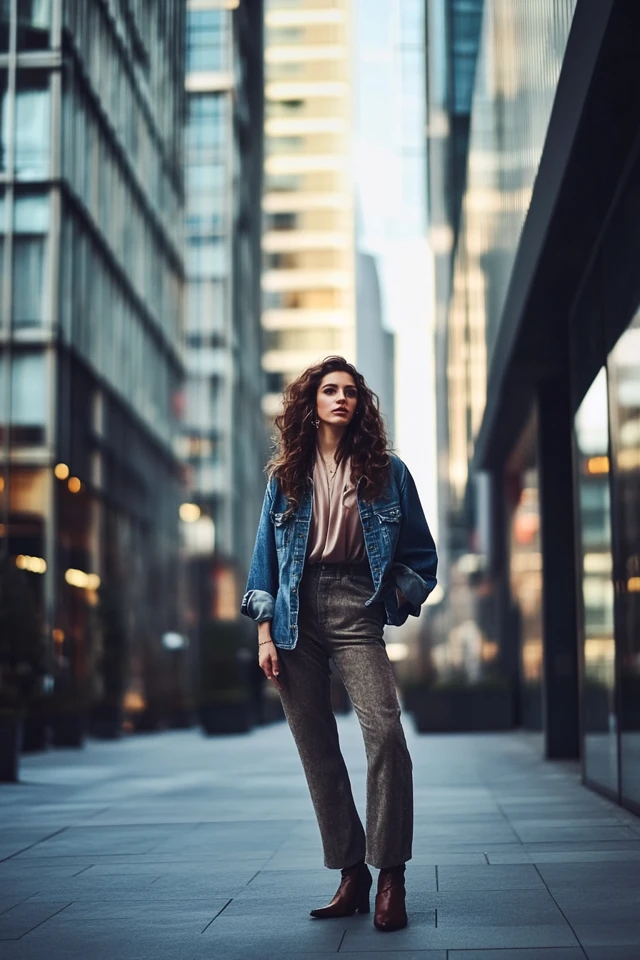
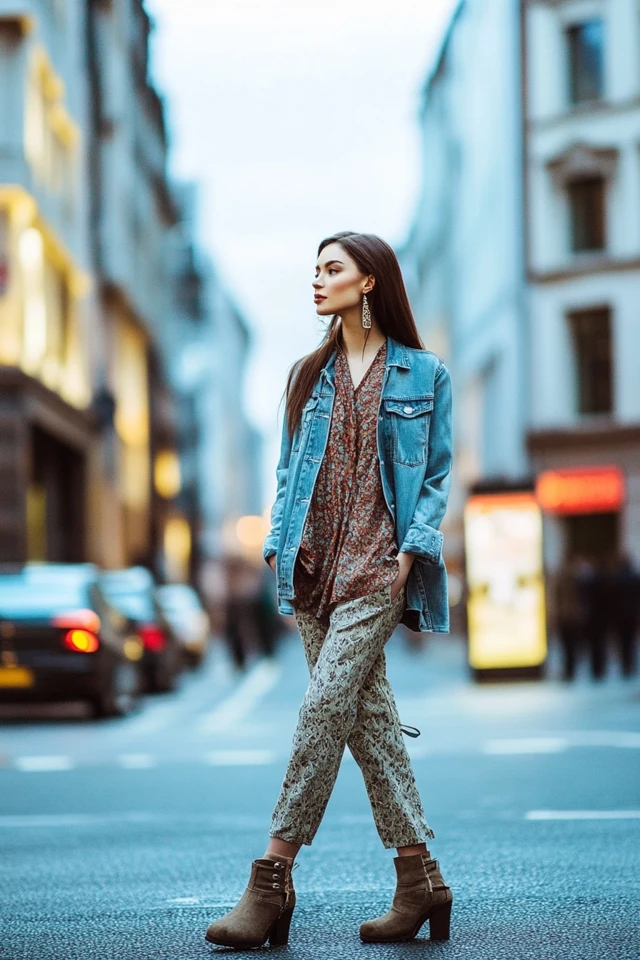
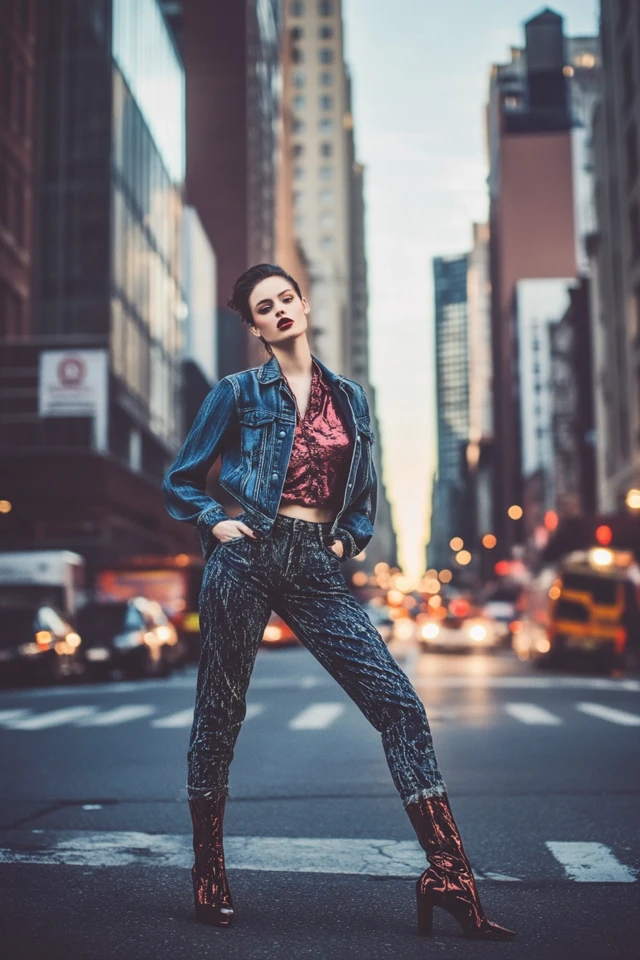
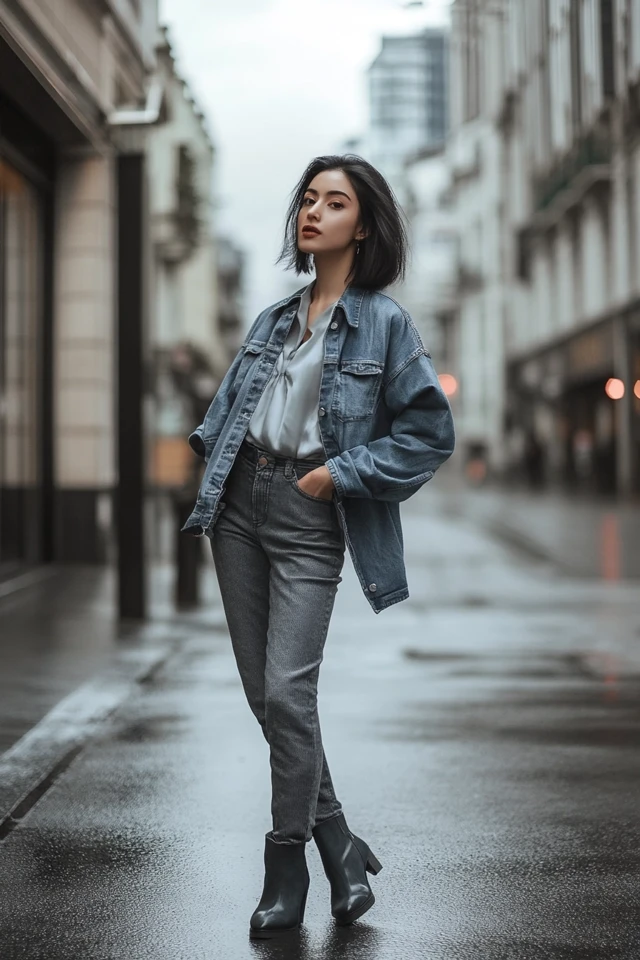
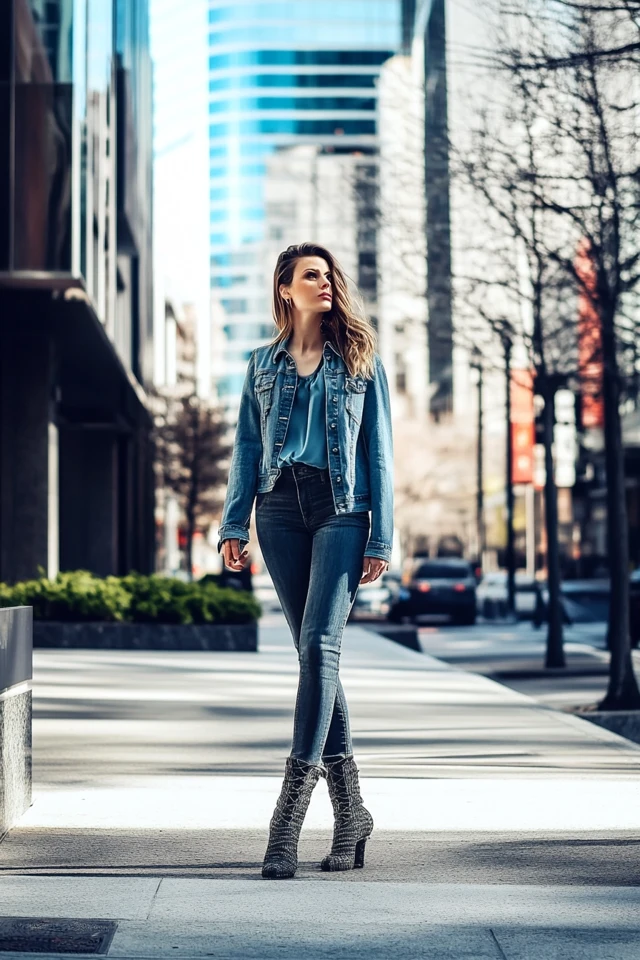
Conclusion
Mixing textures is a sophisticated way to add interest and dimension to your outfits, allowing you to express your personal style with creativity and flair. By understanding the principles of texture mixing, selecting essential textured pieces, and applying practical styling tips, you can create harmonious and visually captivating ensembles suitable for any occasion. Embrace the art of combining varied materials, experiment with different fabric types, and let your wardrobe reflect the rich tapestry of textures that define your unique fashion sense.
Invest in quality textured garments, pay attention to proportions and balance, and don’t be afraid to step outside your comfort zone. With confidence and a keen eye for detail, mixing textures can elevate your style, making your outfits not only stylish but also uniquely you. Happy styling, and may your textured combinations bring depth, elegance, and endless fashion possibilities to your everyday looks!

